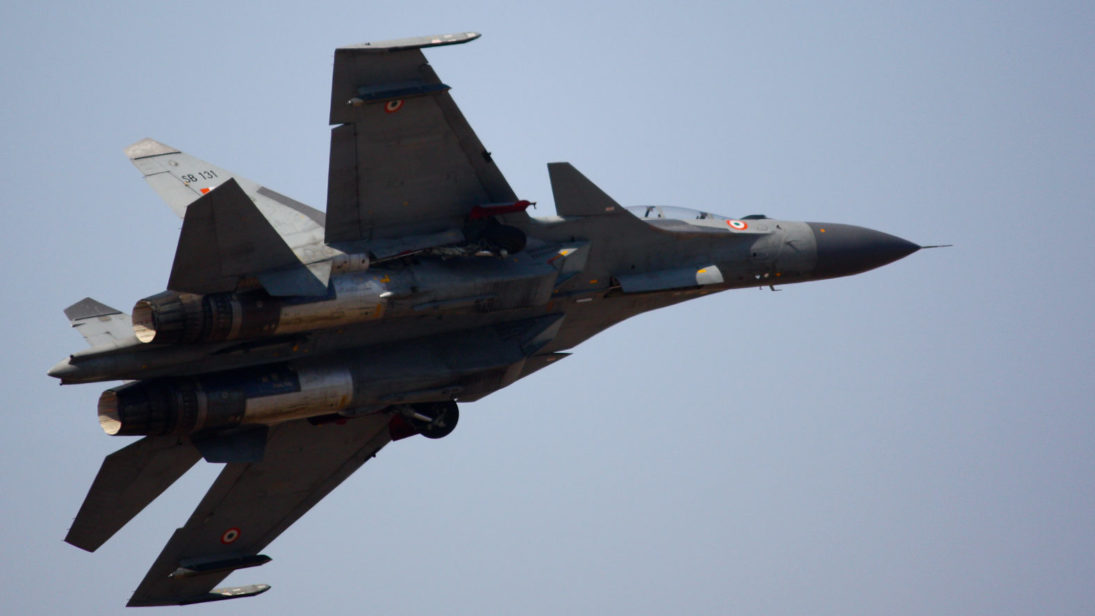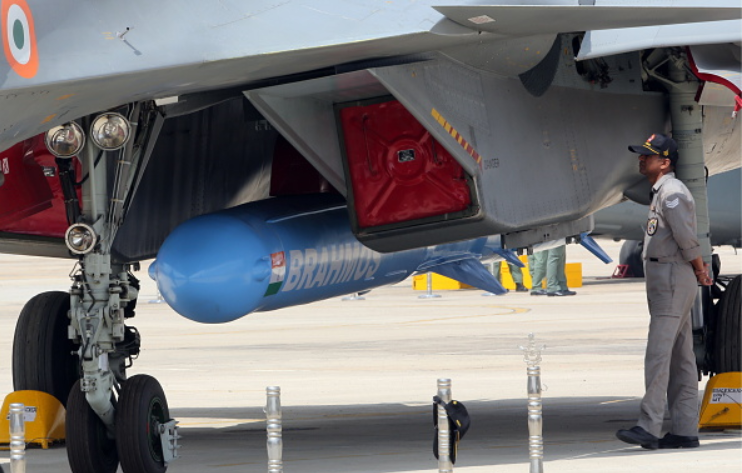
Last week, a modified Indian Air Force (IAF) Sukhoi Su-30MKI fighter jet took off from Kalaikunda airbase in West Bengal and fired a BrahMos supersonic, nuclear-capable cruise missile at a target ship in the Bay of Bengal. Flying over a distance of 260 kilometers, the missile effectively destroyed the vessel. This test is a game changer for Indian offensive prowess in the Indian Ocean region and will act as a potent aircraft carrier killer due to its speed, range, and launch platform.
Technical capabilities
A press release from the Indian Ministry of Defence said “the air launched BrahMos missile is a 2.5 ton supersonic air to surface cruise missile” with a range of over 400 kilometers. This particular missile test signifies a major leap for the BrahMos project and vastly expands India’s anti-access bubble in the Indian Ocean. Fitting this missile on fighter jets enables Indian forces to quickly respond to targets at long-range distances. As such, this capability now acts as both a deterrent to enemy attack and as an offensive weapon.
The mating of the missile with the aircraft, followed by its clean separation during the launch, represents a significant technological achievement by IAF and Defence Research and Development Organisation (DRDO) engineers. The development of an air-launched platform makes the BrahMos an ideal aircraft carrier killer that can keep enemy Carrier Strike Group’s (CSG) far from the Indian mainland.
A joint venture between India and Russia, the BrahMos derives its name from Brahmaputra and Moskva rivers. Previous versions have already been deployed by the Army and Navy. In fact, the anti-ship variant was the first to be tested and subsequently deployed on frontline warships, greatly augmenting the Navy’s first strike capabilities. BrahMos began as an anti-ship warfare missile which means it already has the ability to pick and destroy solitary ships operating in the vast expanses of the ocean. The Army variant designed to strike targets in urban environments with pinpoint accuracy was deployed later. Both these variants were major force multipliers for the Indian military, but it is the air variant which tips the scales for India in the region in terms of India’s anti-access reach.

Going into further detail, the BrahMos’ ability to overcome the defenses of a CSG is significant. Namely, an aircraft carrier is always escorted by a battle group, which creates a layered self-defense bubble around the carrier. As such, a single incoming missile, even at several times the speed of sound, could be shot down by the formidable air defense systems of the CSG. But a volley of multiple BrahMos missiles fired from several Su-30MKI aircraft would be a tall order to intercept.
It only takes one successful hit to cripple the carrier and thereby render the CSG meaningless. More than the loss of the carrier capability and carrier’s enormous cost, the blow to morale due to the loss of personnel and national pride would also be crippling. It must be remembered that carrier operation is a significant technological and financial challenge and few nations on this planet maintain them.
Implementation and regional implications
This context demonstrates BrahMos’ potency. The missile will also contribute to India’s conventional deterrence in that the missile and launch aircraft operate in a highly dense electro-magnetic space and air defense cover. Having fighter jets equipped with BrahMos missiles allows Indian forces to deploy those missiles outside the range of enemy air defenses and destroy command and control centers and other critical infrastructure. Once the missile is launched, the fighter aircraft can scoot away quickly before the adversary can react. The Su-30 has a maximum speed of Mach 2 (or 2,470 kilometers per hour) and an in-flight range of 3,000 kilometers which can be further extended by mid-air refueling, vastly expanding the operational footprint. The IAF plans to modify at least 40 Su-30MKIs to carry the BrahMos missiles. Another factor which further enhances this capability is the increasing range of the BrahMos. The range is being extended in stages since India joined the Missile Technology Control Regime (MTCR) in 2016 from the original 290 kilometers to 450 kilometers. Work is underway to expand this to 600 kilometers.
It is yet to be seen how countries in the Indian Ocean will react to this development. When speaking of the regional “footprint” of BrahMos in the Indian Ocean, China provides the underlying subtext as India’s only adversary that operates a carrier and is building more. China’s actions in the Indian Ocean region have already caused concern among Indian strategic thinkers, including the 2014 docking of a Chinese submarine in Colombo, Sri Lanka. In a recent Navy Day press conference, Indian Admiral Sunil Lanba reported that there are eight Chinese PLA Navy ships deployed in the Indian Ocean at any one time. As such, the successful test of the air-launched BrahMos last month may impact Beijing’s strategy towards the Indian Ocean region.
In sum, last month’s test is the first in a series of many developmental tests needed to fully validate the BrahMos missile before it can be operationally deployed. However, once inducted it will bring important improvements to the capacity to the IAF in keeping adversaries at a distance.
***
Image 1: Zoomed In via Flickr.
Image 2: Marina Lystseva via Getty Images.


